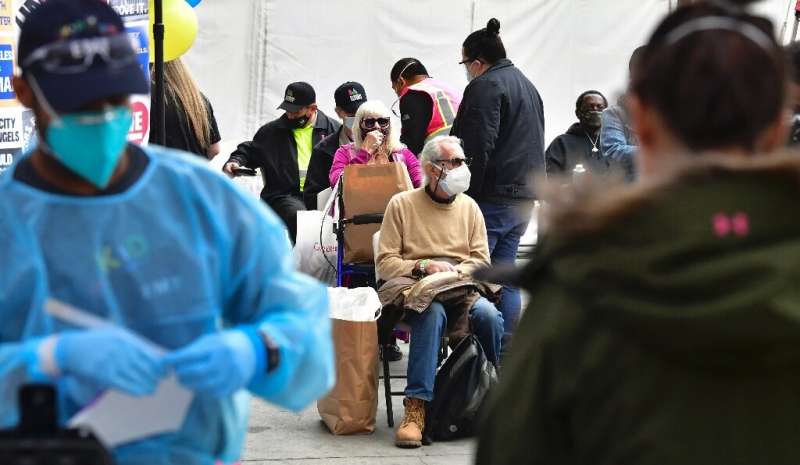
The United States’ Covid vaccination drive entered a new phase Thursday as thousands of pharmacies were scheduling shots, but a wave of optimism brought about by falling cases could soon be tested by dangerous variants.
President Joe Biden’s administration was shipping a million doses to some 6,500 drugstores and supermarket pharmacies nationwide, with several chains announcing they would begin giving out the first shots Friday.
The US immunizations campaign got off to a shaky start in December but has since improved: 44.8 million shots have now reached arms, and at least 33.7 million people have received one or more doses, roughly 10 percent of the population.
The pharmacy program will eventually expand to 40,000 outlets, while the federal government has also used emergency legislation to ramp up vaccine production, opened mass vaccine sites in stadiums, and has begun a separate program to reach underserved communities.
“If you look at the projection, by the time we get to April, that would be for want of better wording ‘open season,’ namely virtually everybody and anybody in any category could start to get vaccinated,” Anthony Fauci, the president’s chief advisor on the pandemic, told NBC.
After several more months, the overwhelming majority of people would be vaccinated by the “middle and end of the summer,” he added.
Since peaking on January 8 following the holiday season, the US outbreak has been in steep decline, with an average of just over 100,000 daily cases—down from more than 300,000.
Hospitalizations and fatalities are following—but the worst-hit country in the world is still expected to reach the latest grim milestone of half a million deaths later this month.
And, because of the fragmented nature of the US health system, widespread confusion persists among the public over where and when they can get vaccinated.
Stark racial and economic disparities have also emerged. In the capital Washington, vaccines have been disproportionately allocated to residents of the city’s affluent, white neighborhoods where people have been quicker to register by phone or online.
Vaccine hesitancy is also significantly higher among Black and Latino people, who are already twice as likely to die from Covid-19, because of experiences with structural racism in the medical system.
Rebound fears
Between the number of people already vaccinated and the number of people who’ve already been infected, it’s thought that around 40 percent of the population might have some immunity, which is also contributing to the slowdown in new cases.
But while the numbers are headed in the right direction, experts warn it’s not time to get complacent.
The winter surge was compounded by people gathering over the holidays for Thanksgiving, Christmas and the New Year, and if those patterns were repeated during last Sunday’s Super Bowl, we can expect to see a spike.
The highly-transmissible B.1.1.7 variant that was first identified in Britain is also rapidly spreading in the US and is set to become the dominant strain by March, according to multiple studies.
This has the potential to reverse current progress—just as it did for example in Ireland, which had gotten its outbreak under control by late 2020, but was hit by a B.1.1.7 driven exponential wave in January that it is now recovering from.
A smaller amount of this variant can cause Covid-19, so attention has shifted toward better masking practices.
The Centers for Disease Control and Prevention confirmed Wednesday that wearing a cloth mask on top of a medical mask, or knotting and tucking a medical mask to fit more snugly, offers significantly better protection against catching or spreading Covid-19.
The race to rollout vaccines is made all the more urgent by variants first identified in South Africa and Brazil, which have been shown to render current shots less potent and cause reinfections in people who previously had the classic Covid strain.
Source: Read Full Article
